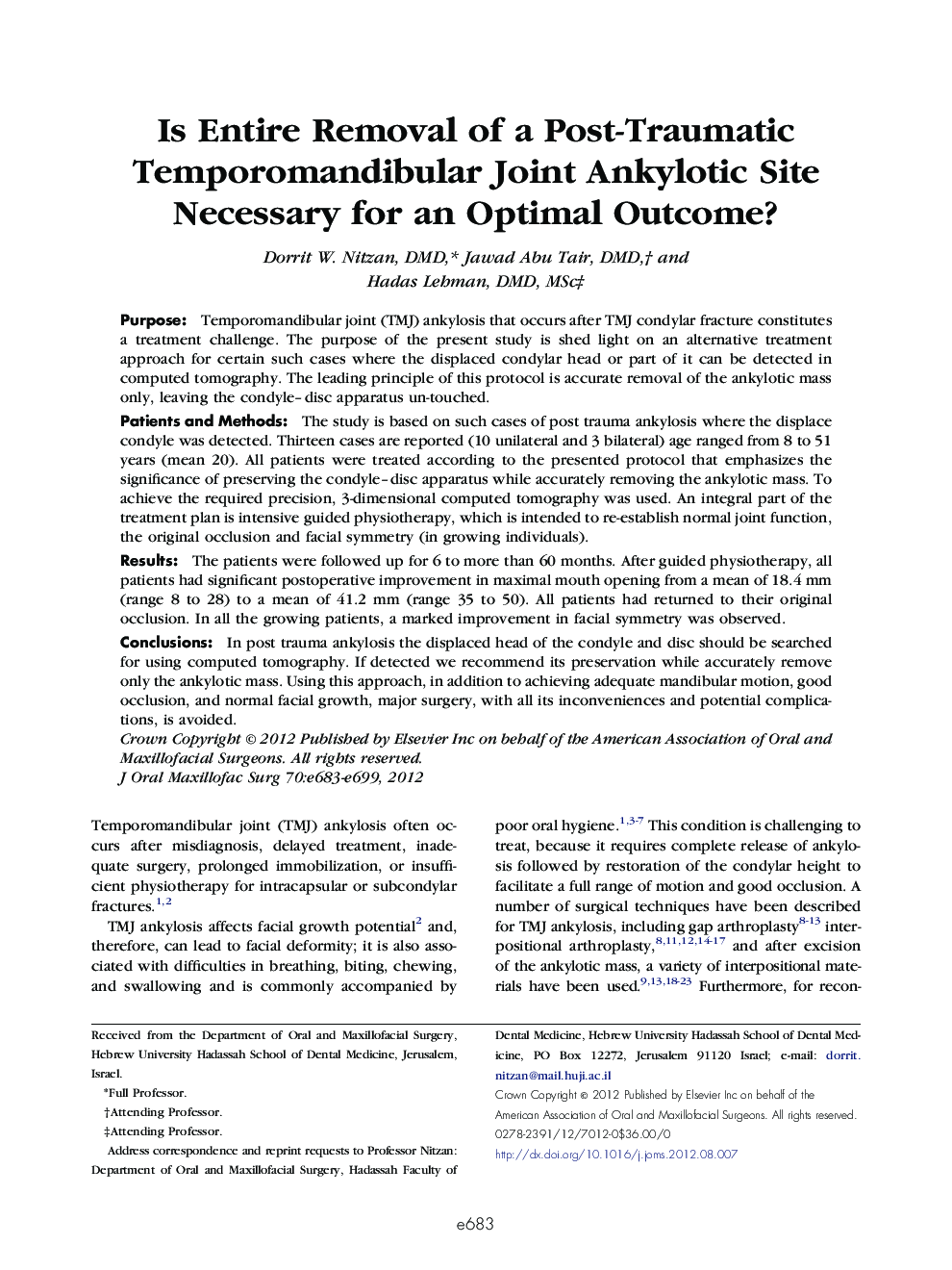| Article ID | Journal | Published Year | Pages | File Type |
|---|---|---|---|---|
| 3158068 | Journal of Oral and Maxillofacial Surgery | 2012 | 17 Pages |
PurposeTemporomandibular joint (TMJ) ankylosis that occurs after TMJ condylar fracture constitutes a treatment challenge. The purpose of the present study is shed light on an alternative treatment approach for certain such cases where the displaced condylar head or part of it can be detected in computed tomography. The leading principle of this protocol is accurate removal of the ankylotic mass only, leaving the condyle–disc apparatus un-touched.Patients and MethodsThe study is based on such cases of post trauma ankylosis where the displace condyle was detected. Thirteen cases are reported (10 unilateral and 3 bilateral) age ranged from 8 to 51 years (mean 20). All patients were treated according to the presented protocol that emphasizes the significance of preserving the condyle–disc apparatus while accurately removing the ankylotic mass. To achieve the required precision, 3-dimensional computed tomography was used. An integral part of the treatment plan is intensive guided physiotherapy, which is intended to re-establish normal joint function, the original occlusion and facial symmetry (in growing individuals).ResultsThe patients were followed up for 6 to more than 60 months. After guided physiotherapy, all patients had significant postoperative improvement in maximal mouth opening from a mean of 18.4 mm (range 8 to 28) to a mean of 41.2 mm (range 35 to 50). All patients had returned to their original occlusion. In all the growing patients, a marked improvement in facial symmetry was observed.ConclusionsIn post trauma ankylosis the displaced head of the condyle and disc should be searched for using computed tomography. If detected we recommend its preservation while accurately remove only the ankylotic mass. Using this approach, in addition to achieving adequate mandibular motion, good occlusion, and normal facial growth, major surgery, with all its inconveniences and potential complications, is avoided.
